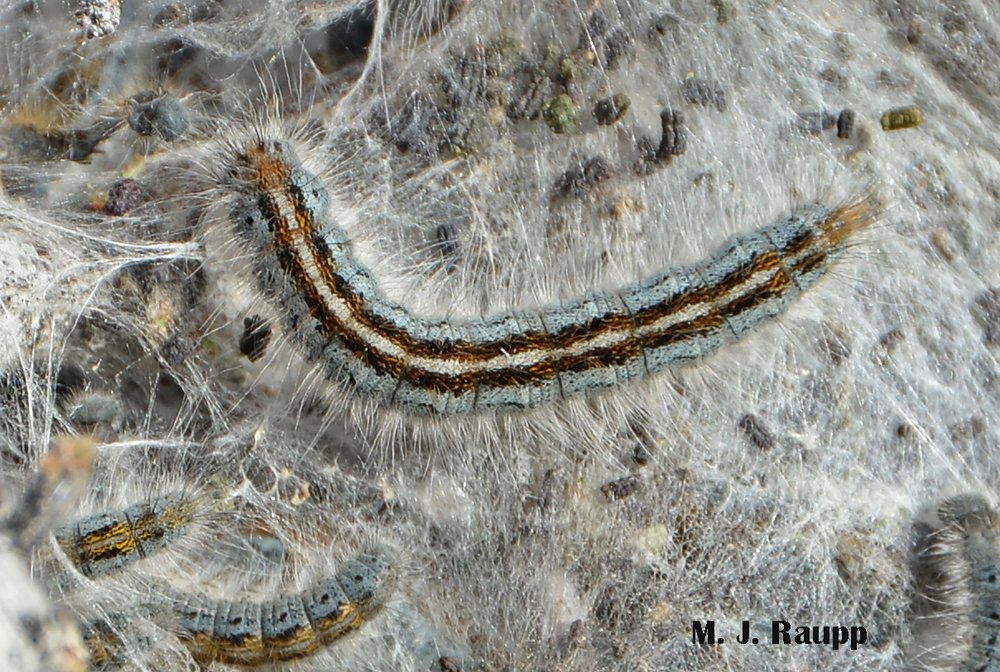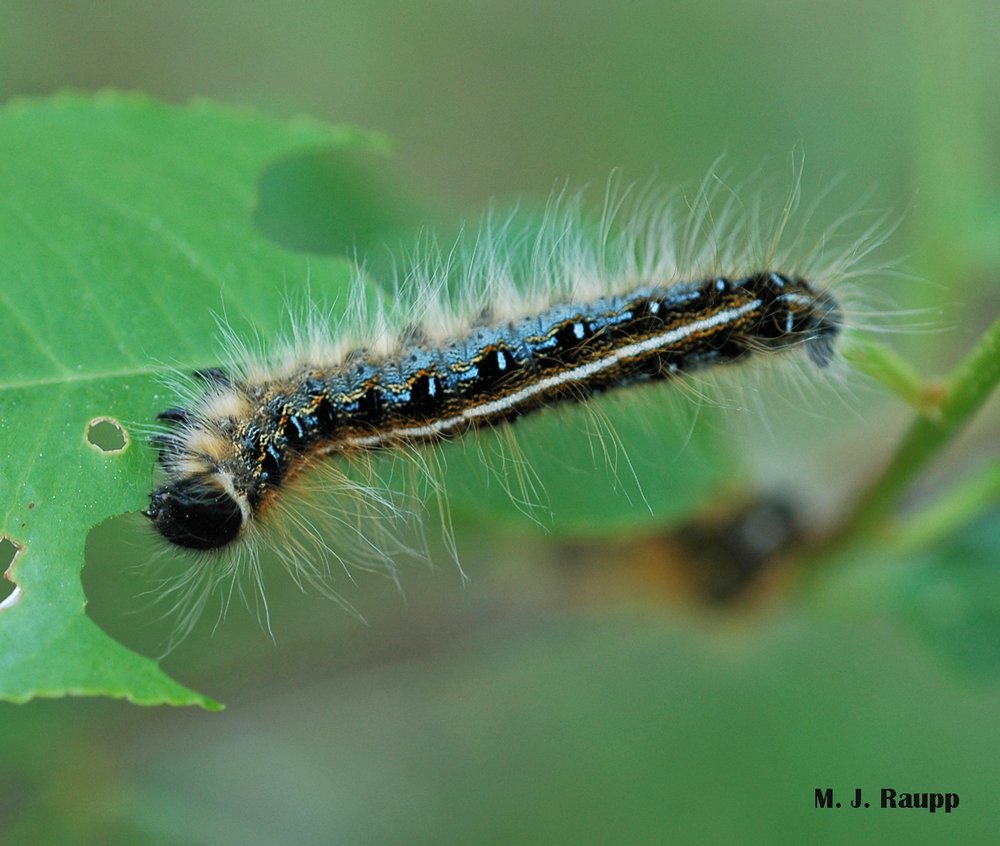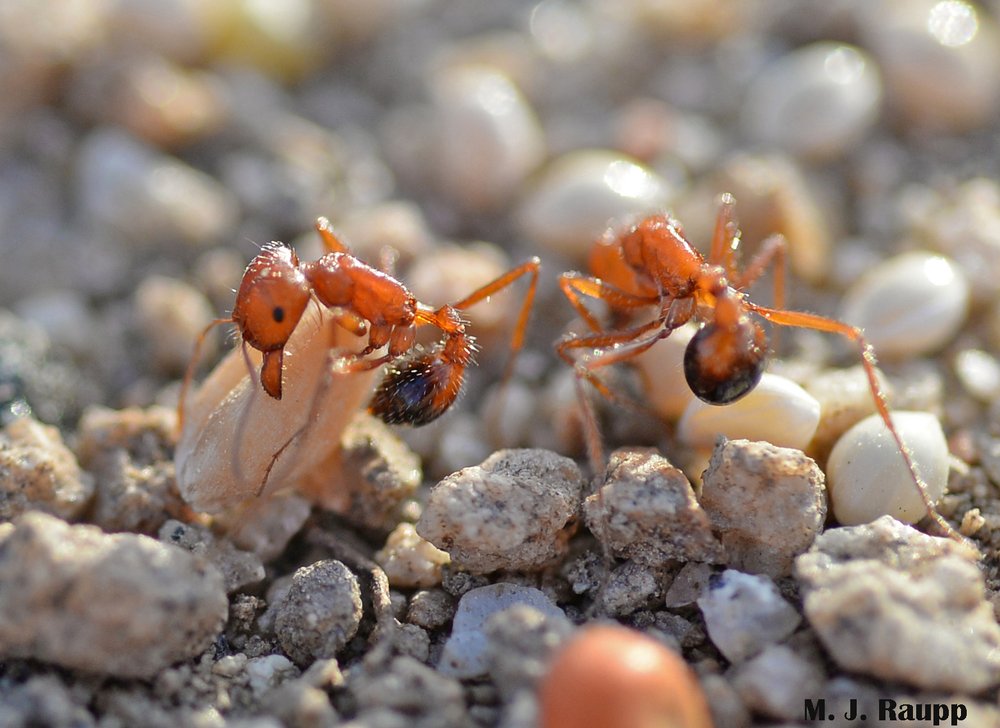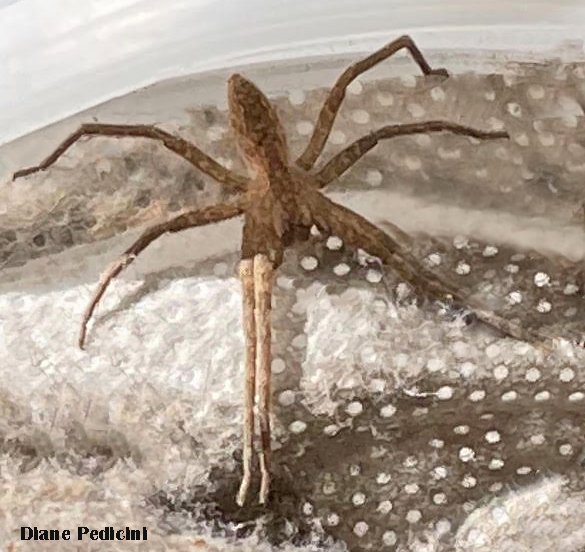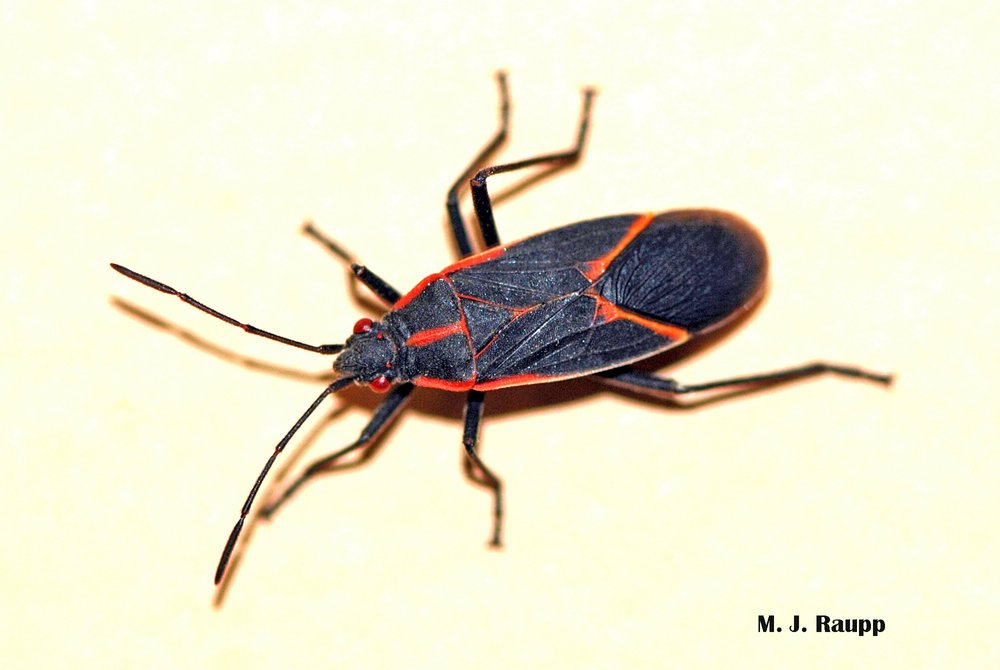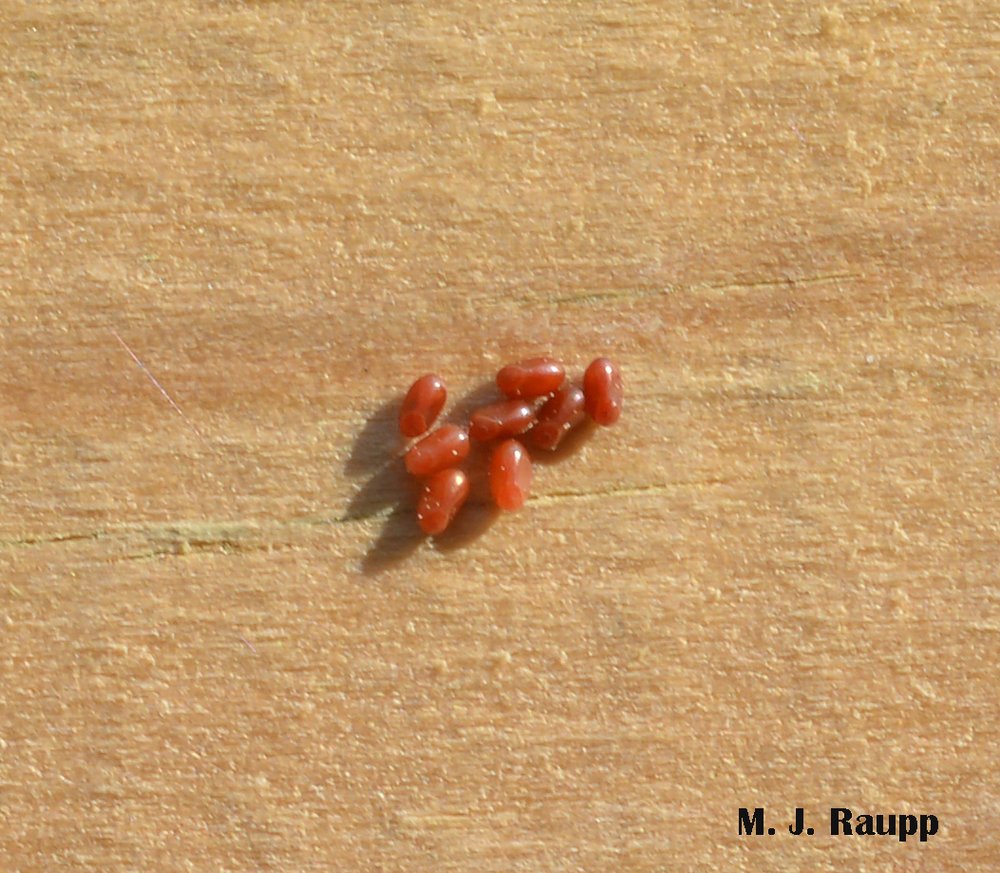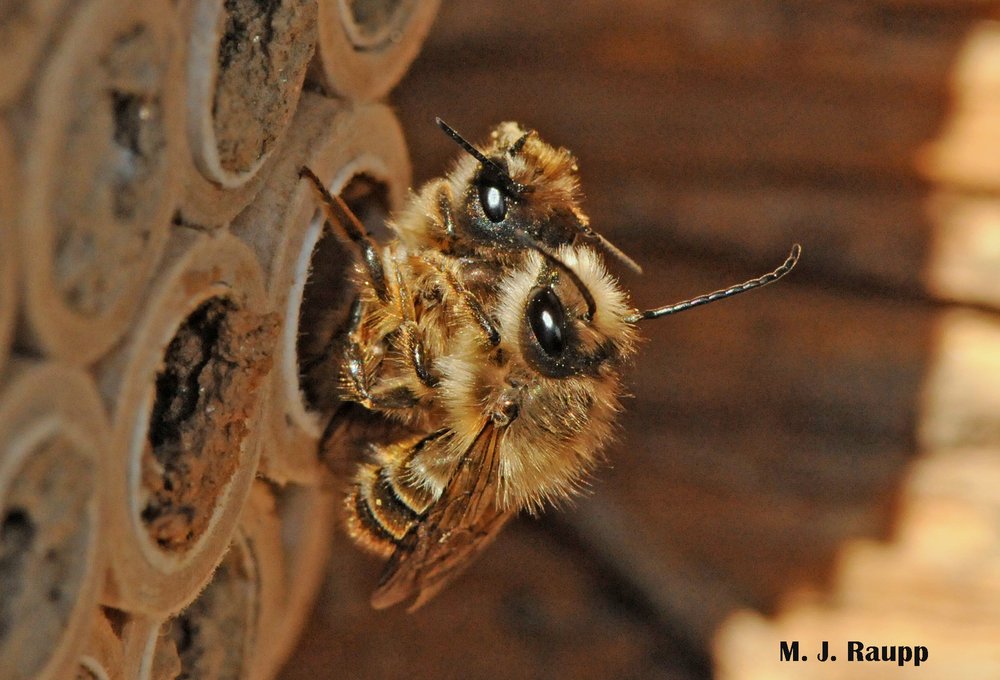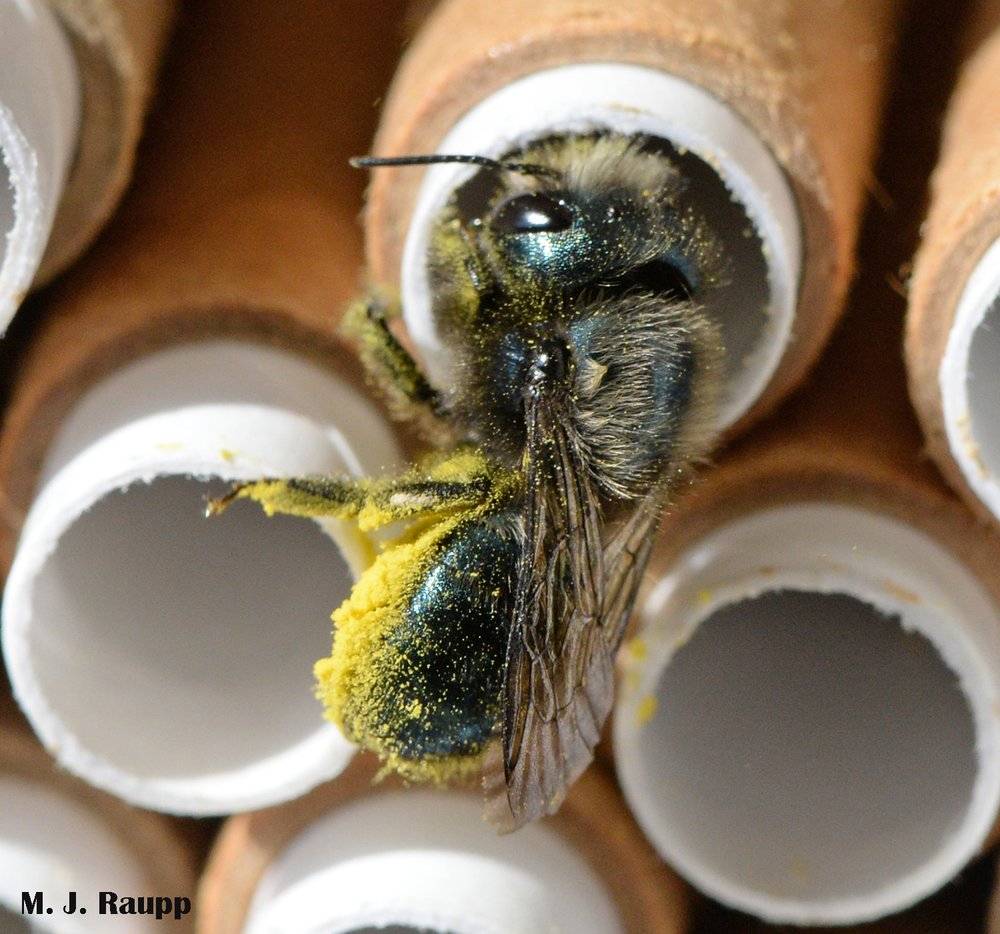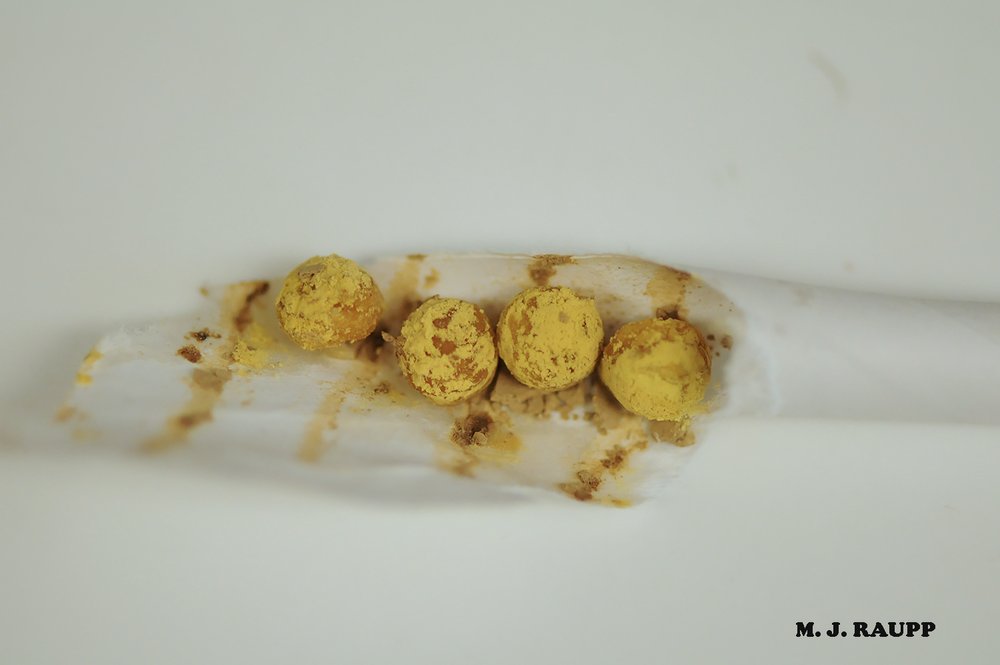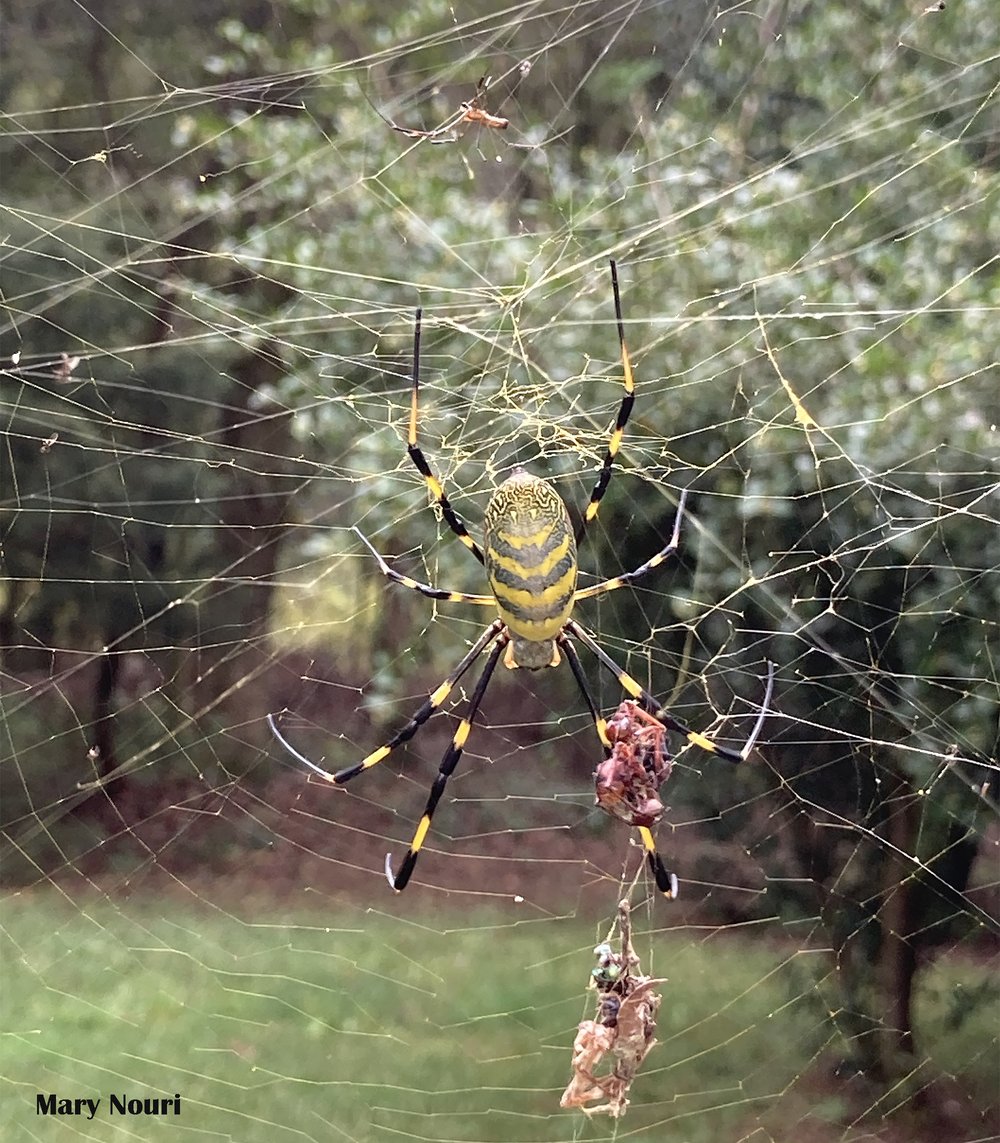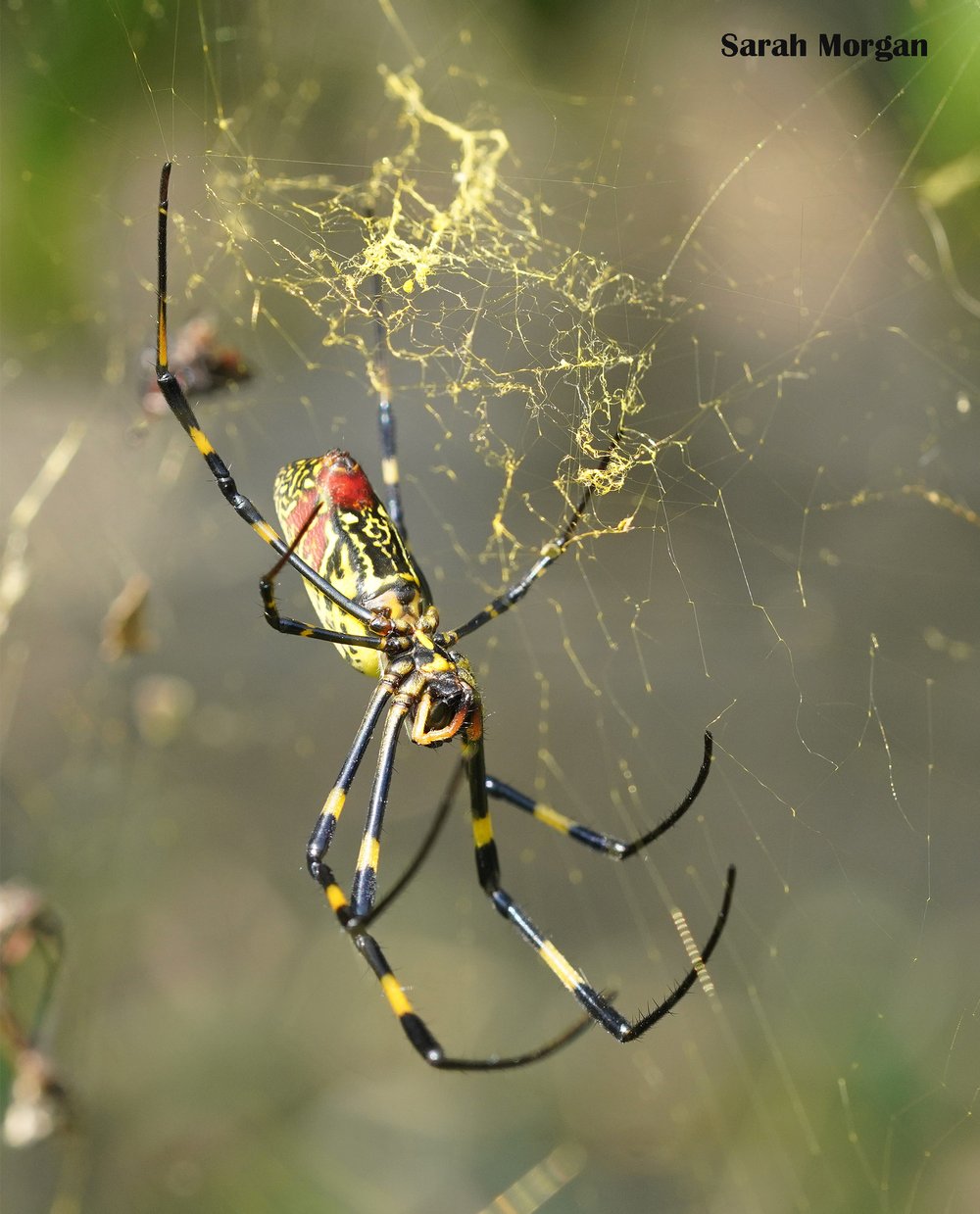The Nationals aren’t the only ones wearing red at Navy Yard: Get ready for red-shouldered bugs, Jadera haematoloma
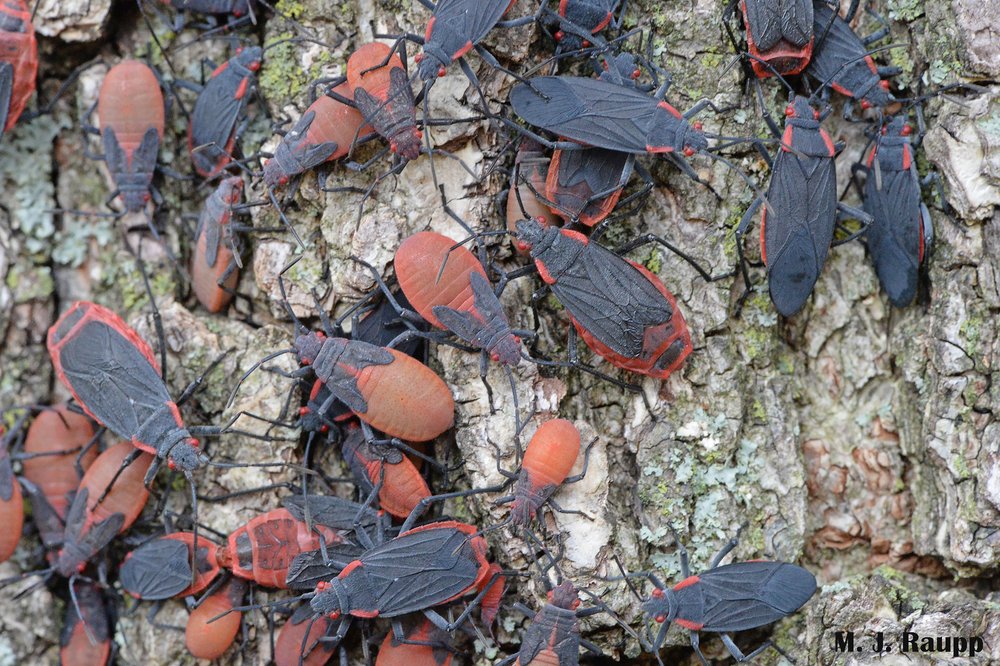
By late summer, hordes of winged red-shouldered bugs and wingless nymphs will cluster on the bark of golden rain trees.

Lining a promenade in Navy Yard, this grove of golden rain trees serves dinner for legions of golden rain tree bugs.
On a rare 70-degree day two weeks ago, good fortune found me on a pleasant promenade that connects New Jersey Ave. and 4th Street south of the US Department of Transportation in Washington DC, a section of the city known as Navy Yard and which serves as the home of the Nationals baseball team. A beautiful water feature graces the promenade and this urban refuge is shaded by golden rain trees, Koelreuteria paniculata, beautiful ornamental trees widely planted in landscapes throughout North America and worldwide. These sturdy trees are favored in urban landscapes by virtue of their ability to withstand a variety of growing conditions and soil types. Their ornamental value comes from large clusters of bright yellow flowers displayed from summer into fall. In autumn the flowers produce interesting clusters of showy, papery seedpods. The seedpods are reddish-purple when developing and turn brown as they mature. Several ebony seeds are produced within each pod. Legions of seeds rain down to earth beneath the golden rain tree. Sturdy shells inhibit degradation of the pods in winter and a nutritional bounty remains in spring.
Our southern and gulf-coast states are home to several native plants belonging to the golden rain tree family of plants, the Sapindaceae, commonly called soapberries. A striking insect called the red-shouldered bug, or golden rain tree bug, has evolved to use the seeds of soapberries as food. Golden rain tree bug is a “true” bug identified by its sucking mouthparts, young that are called nymphs, and half-leathery, half-membranous front wings. Jadera belongs to the clan of true bugs known as scentless plant bugs or Rhopalidae. We met other rhopalids in previous episodes including boxelder bugs and curious Niesthrea lousianica, the eater of mallows. Historically, red-shouldered bugs occupied neotropical realms in Central and South America, and in North America were found primarily in southern states including Florida, Texas, Arizona, and California, where they dined on native soapberries.
On a promenade in Navy Yard, red-shouldered bugs scramble across the pavement and scale rain trees while playing the mating game. The guys seem to have a hard time keeping pace as females lead the way. Potential interlopers access their options and quickly move along. When it comes to dining, red-shouldered bugs are a chummy lot as they share meals of rain tree seeds.
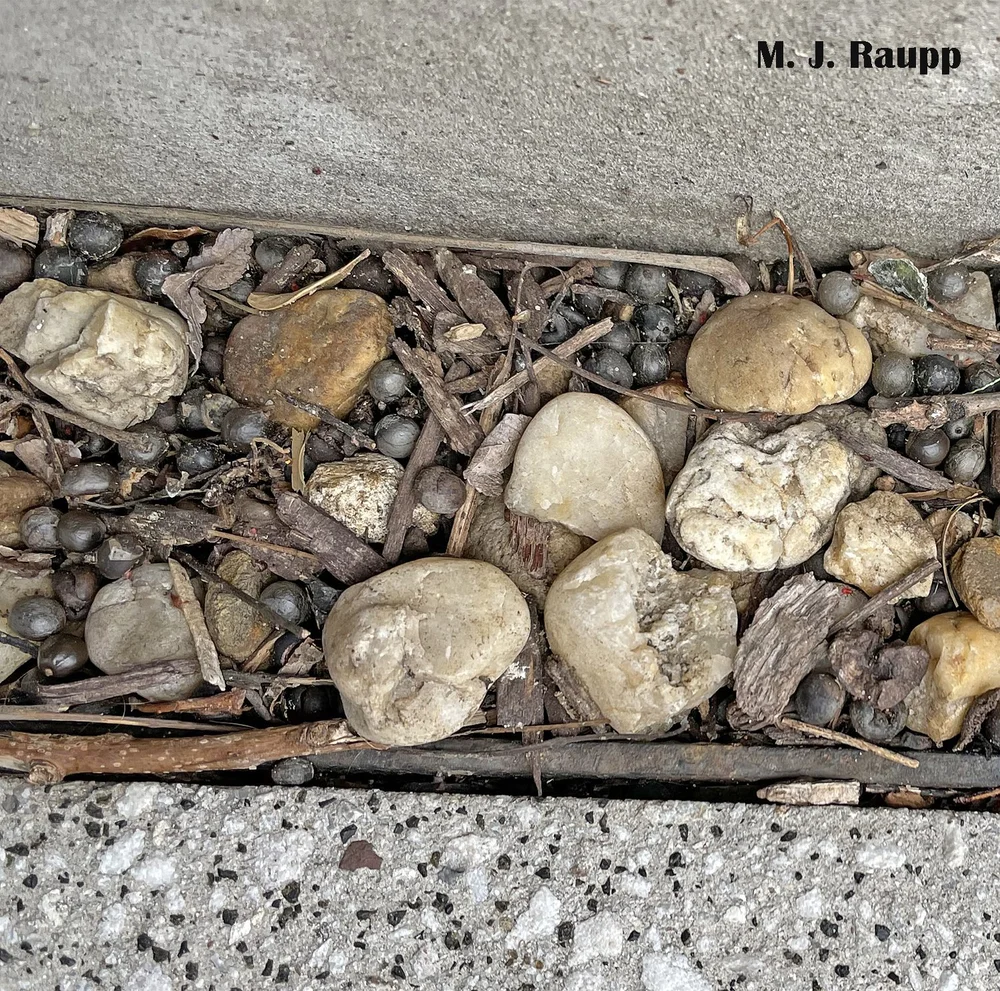
Beneath golden rain trees, thousands of seeds produced last summer provide a ready food source for red-shouldered bugs this spring.
The introduction of golden rain tree to our country in the 1700s provided an excellent opportunity for the red-shouldered bug to try Asian cuisine. Golden rain tree is now one of the favored foods of this bug throughout our country. During the past century, red-shouldered bugs have made a steady march northward, discovered in North Carolina in 1938, Virginia in 1987, and Maryland in 2002. Scientists believe that milder winters associated with climate change facilitated the range expansion of red-shouldered bugs into regions where chilly winter temperatures previously excluded them. As I walked the golden rain tree promenade, dozens of red-shouldered black bugs milled about on the ground feasting on fallen seeds, scrambling up trees, and basking on sidewalks. While hordes of bugs were a source of delight for me, so many bugs in one place night unnerve other visitors to the Yard.
Soon bright red nymphs of the golden rain tree bug will appear on the ground, sucking nutrients from seeds of rain trees.
As the weather turns warm, these red and black beauties will mate, lay eggs, and feed on the bounty of the rain tree. Using their beak, nymphs and adults pierce the tough seed coat and probe the nutritious meat of the seed. Digestive enzymes pumped through the beak into the seed break down proteins, fats, and carbohydrates. Once liquefied, these nutrients are sucked back up the beak and into the gut of the bug where they are converted to proteins used for growth and reproduction or broken down to supply the energy for all the running about and mating that occupies the time of these bugs. These bugs have been known to enter buildings in autumn when the weather finally turns cold and bugs seek shelter. In the wild, shelter might be a fallen log, a pile of branches and leaves, or a rocky outcropping. In their new urban home, winter shelter for the red-shouldered bug might be one of the many dining establishments or agency buildings found in Navy Yard. Will they appear in other venues, maybe in center field at Nats Park with humans wearing red? Probably not, but only time will tell.
Sometimes the simplest tasks, like transporting a soapberry, get complicated when you’re a bug.
Acknowledgements
We thank members of the Pick lab, Jackie, and Others Coffee for providing the inspiration for this episode of Bug of the Week. “Jadera haematoloma, Another Insect on its Way North (Heteroptera: Rhopalidae)” by Richard L. Hoffman and Warren E. Steiner, and “Specialization of Jadera Species (Hemiptera: Rhopalidae) on the Seeds of Sapindaceae (Sapindales), and Coevolutionary Responses of Defense and Attack” by Scott P. Carroll and Jenella Loye, were consulted in creating this episode.
This post appeared first on Bug of the Week
